
The Ultimate Pie Crust Guide
This post may contain affiliate links. Read our disclosure policy.
It’s easy to tell the difference between homemade pie crust and store-bought. The latter usually lacks the buttery flavor and ultra flaky texture that you can achieve by making pie crust yourself. Yet, most people are intimidated by that idea even though pie crust relies on the most basic ingredients and equipment you likely already have on hand and is actually fairly easy to make. It just requires some patience. If you know anything about making pie crust, you know the ingredients need to be very cold. Cold ingredients mean flaky texture. Also, you should avoid overworking the dough and making it tough.
Beyond those little baking rules, there are some variations in pie crust recipes that lend different results. Whether the crust is buttery, flaky, tender, hard, firm, or crumbly all depends on a few key ingredients and methods. Some recipes make quick work of pie crust whereas others are more hands-on. Should you use butter or shortening? Make the crust by hand or with a food processor? Should you add a tenderizing ingredient, such as sour cream or vodka? I went to work testing out these various ingredients and techniques to find out how they affect the final pie crust. I started with a very basic, all-butter and food processor based pie crust and made small experimental changes. I used the same ingredients, utensils, and bakeware when applicable to ensure consistent results. Instead of baking a whole pie, I rolled out each dough into about an eighth-inch thickness and cut out small circles with a cookie cutter. I brushed each circle very lightly with egg wash then baked in a 350°F oven for about 13 minutes, until golden. This allowed me to really compare the shape, texture, and taste of each batch. Take a look at the results, I hope they help you discover the tricks to making your version of the perfect pie crust!
Control Recipe:
Yield: 1 9-inch single pie
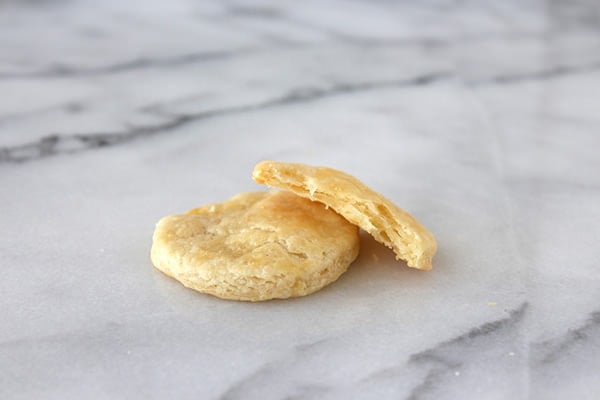
Ingredients:
1 1/4 cups (5.3 ounces) all-purpose flour
1/2 teaspoon salt
1 teaspoon sugar
1 stick (4 ounces) cold unsalted butter, cut into small pieces
2 to 4 tablespoons ice water
Directions:
In the bowl of a food processor, pulse the flour, salt, and sugar until combined. Add the butter, and pulse until the mixture resembles coarse meal, with larger chunks of butter remaining. Drizzle 2 tablespoons of ice water over the mixture and pulse until it just comes together without being wet, sticky, or crumbly. Do not over mix. If the dough doesn’t hold together when pinched between your fingers, add another tablespoon of water and pulse.
Place the dough on a large sheet of plastic wrap. Shape the dough into a disk, wrap well in the plastic, and chill in the fridge until firm, at least 1 hour or up to 3 days. Make ahead and freeze, well wrapped in plastic, for up to 2 months. Defrost in the fridge overnight. The dough is now ready to be rolled out and baked.
Shortening:
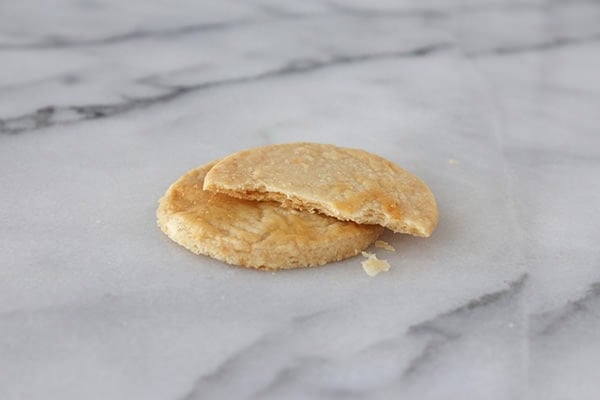
I wanted to determine the differences between using butter versus shortening in this experiment so I substituted all of the butter with 1/2 cup well chilled and cubed vegetable shortening, proceeding with mixing in the food processor. This dough was very easy to work with since shortening has a higher melting temperature than butter. However, this also means that unlike the very hard chunks of cold butter that remain in the control dough, shortening is soft enough that it is easily overworked, resulting in a crumbly dough instead of a flakey dough. All-shortening dough doesn’t require as much chilling time and is very soft and malleable. As you can see in the photograph, this all-shortening dough ended up being flat, tender, and fairly crumbly. The texture was actually reminiscent of shortbread and it was completely lacking in flavor. In fact, the flavor reminded me of store-bought dough. Using a ratio of shortening and butter would produce better results, or mixing the shortening dough by hand instead of using the food processor to avoid over mixing.
Vodka:
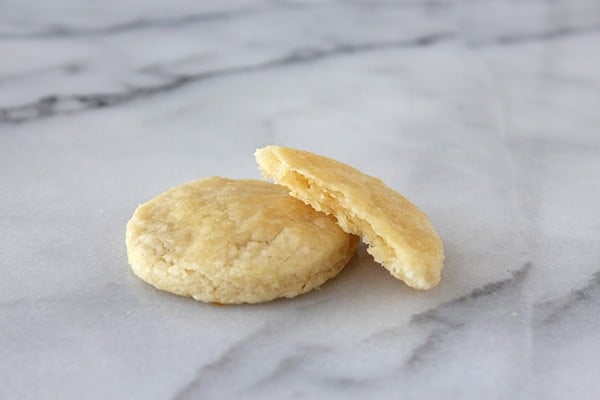
The kitchen scientists over at Cook’s Illustrated magazine claim that by substituting a portion of the water with vodka in a pie crust recipe, you prohibit gluten development and therefor ensure a tender, flaky crust. I wanted to see if they were right so from the control recipe I added 2 tablespoons of cold vodka and reduced the water to 2 tablespoons. The texture of the dough was surprisingly crumbly but still easy to work with. It baked up flakey but also very tender, though I didn’t find the difference to be revolutionary by any means. I would probably skip the vodka trick altogether next time I make pie crust.
By Hand:
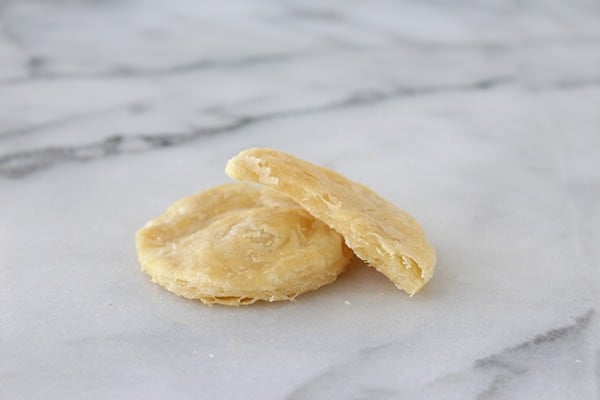
In this trial I used the same exact ingredients but made the dough by hand, not in the food processor. I used a pastry blender to cut the butter into the flour mixture until it resembled coarse meal then gently stirred in ice cold water until the dough came together. This method was much more time-consuming and messy than the food processor method. The dough was more difficult to bring together into a cohesive disk because the chunks of butter were so irregular. However, those irregular chunks of butter produced the flakiest results of all my pie crust experiments. If you don’t have a food processor (or don’t want to lug it out) or if you want the flakiest possible crust, this is definitely the method to use.
Sour Cream:
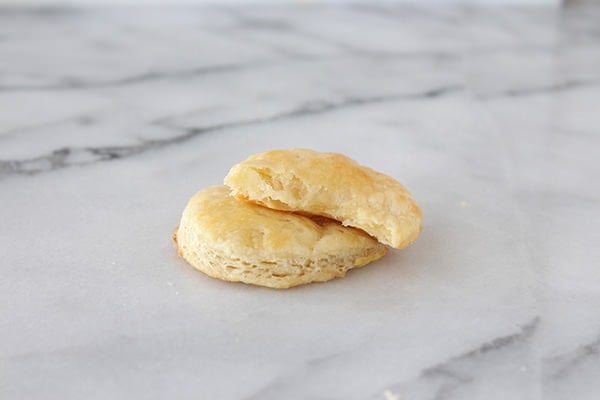
Sour cream acts as a tenderizer in baked goods and I was curious to see if it would significantly affect the texture of pie crust. I added 2 tablespoons of sour cream to the control recipe along with the butter, keeping everything else the same. The dough itself was very soft and slightly sticky, but easy enough to work with. My circles of sour cream pie crust puffed up to a surprising height. The texture was ultra light, puffy, and flaky, almost like puff pastry. The flavor was also fantastic. Beyond the classic control and by hand recipes, this was my favorite pie crust.
Egg:
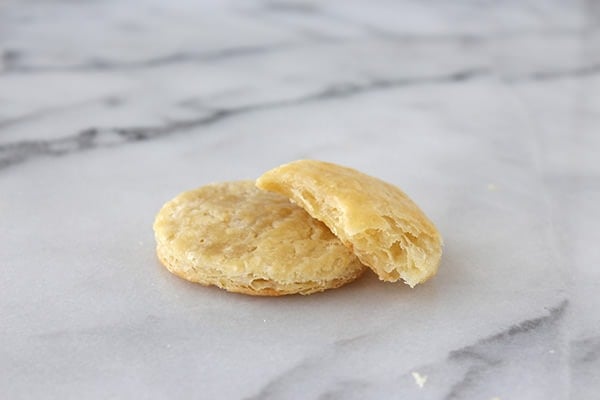
Adding an egg to pie crust is something I first saw from The Pioneer Woman, though many recipes for tart dough call for an egg. I wanted to know how the extra fat and liquid would affect the pie crust, so I added a whole beaten egg along with the water to the control recipe, keeping everything else the same. The dough came together in a more cohesive ball, which was not surprising since egg acts as a binding agent. The baked crust was rich and firm but tender. The flaky layers seemed heavier than the by hand crust and overall this bordered on being slightly greasy.
Final Comparison:
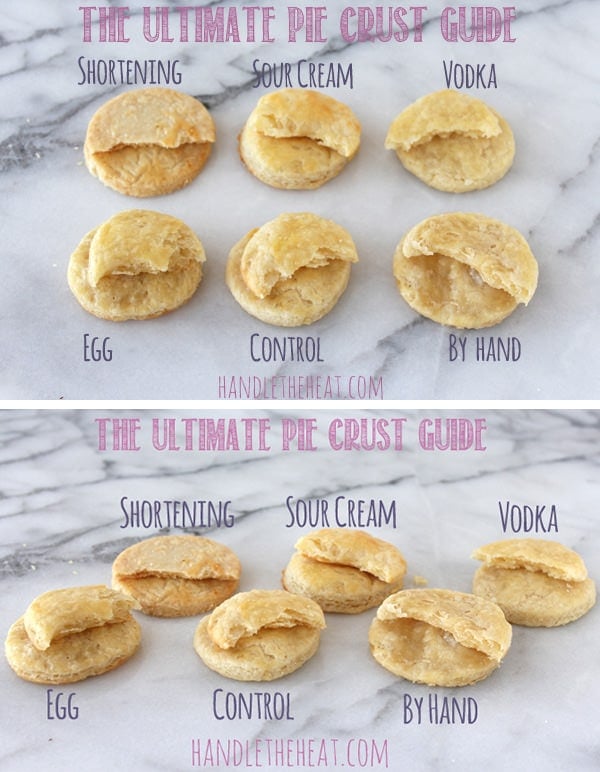
The article The Ultimate Cupcake Guide was originally posted at Relish.com.
Also be sure to check out these ultimate guide posts:
The Ultimate Guide to Chocolate Chip Cookies
The Ultimate Guide to Chocolate Chip Cookies Part II
The Ultimate Brownie Guide
The Ultimate Cupcake Guide
Check out my video tutorial post on How to Make Pie Dough!
About Tessa...
I share trusted baking recipes your friends will LOVE alongside insights into the science of sweets. I'm a professionally trained chef, cookbook author, and cookie queen. I love to write about all things sweet, carb-y, and homemade. I live in Phoenix, Arizona (hence the blog name!)
Leave a Comment & Rating
Add a Review or Question
© Handle the Heat - handletheheat.com
Join the Handle the Heat Community
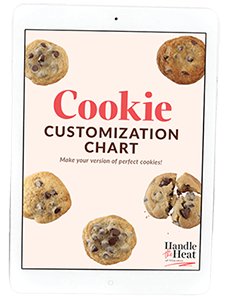
Instead of digging through cookbooks and magazines and searching the internet for amazing recipes, subscribe to Handle the Heat to receive new recipe posts delivered straight to your email inbox. You’ll get all the latest recipes, videos, kitchen tips and tricks AND my *free* Cookie Customization Guide (because I am the Cookie Queen)!

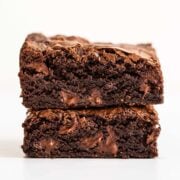





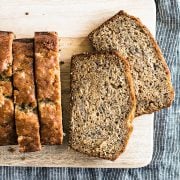
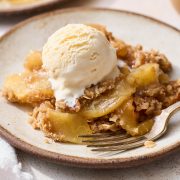
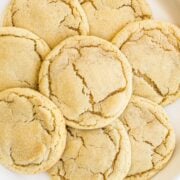
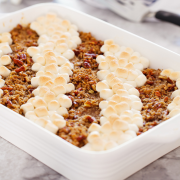

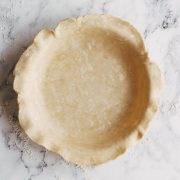
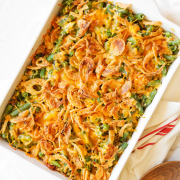
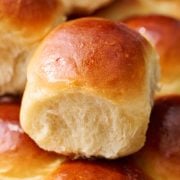
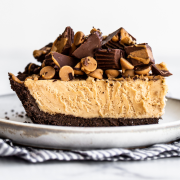

Try duck fat in a pie crust. You will never go back. it creates the most delicate crust and the flavor is divine.
Hello,
Do you recommend freezing pie dough for later use? I searched the website but didn’t find anything. I would like to make the dough and have it ready in my metal/aluminum pie pans. I would be making it about 2-3 days ahead of time.
If it isn’t recommended to freeze in the pan, is it okay to freeze in a disk?
I would love some instruction in how to do either of these methods since I need to speed up the pie-making process.
Thanks
Hi Nancy, sure you can freeze pie dough! Check out our Best Ever Pie Crust, we detail how to make pie crust ahead of time above the recipe 🙂
I have already looked through the recipe and the notes above the recipe as well as the troubleshooting guide. I don’t see any instructions or tips for freezing at all.
I do see many details on how to roll it out, side-by-side comparisons for butter versus shortening, etc.
Hi Nancy, we list how to make pie dough ahead of time below the Butter vs Shortening/Optional Secret Ingredient section in our Best Ever Pie Crust recipe 🙂 Those instructions include how to refrigerate as well as freeze in advance. You can also find the same details in our free download of our Make Ahead Baking Guide. I hope that helps!
Thank you for those comparisons, very interesting – especially the sour cream! Have you tried using lard? I used it to make Christmas mince-pies last year and was surprised at the lovely flakiness of the pastry, but I’m no expert so I’d be keen to hear your thoughts.
Hi Eleanor, we haven’t tested lard yet, but it’s on our list!
My mother always made pie crust (by hand) using shortening and pineapple juice-made for the best flavor and flakiness!
I bet that is so delicious! Moms really know best!!
I’d really like to see you do a vodka-sour-cream-lard
or butter by hand recipe and bake to see what it’s like!
The traditional egg recipe Ree Drummond uses is more than just adding an egg. The ratios of other ingredients are changed and there is also vinegar in the recipe. It is not my most favorite pie crust, but it is still very good.
Hi! Given your experience making pie crust, I was wondering if you could tell me if it’s “normal” for a pie crust to be a bit…oily? I’ve used your control crust recipe to make some handpies, and while the crusts came out very yummy and flaky, I noticed that my fingers were kind of shiny from the butter. I’m a pie novice, so I don’t know if that is normal?
How would the sour dough crust be a quech and would I have to bake it before filling it? What crust would you recommend?
Have you tried using lard rather than butter or (yuck) shortening? I find it makes my pie crusts extremely flaky and the best I have ever made…just like my old German grandma made.
I want the ultimate pie crust guide, please and thank you.
Hi Tessa,
My pie crust was a fail :[ It was not pie crust-y at all and would not hold/roll/stick so I ended up having to press it into the pan, mostly sticking to my fingers. I went with the sour cream crust, not sure what went wrong. Did I pulse too long/much maybe? First timer.
Thanks!!
Hi Shelby, sometimes you have to adjust the pie dough by look and feel, adding more water to allow it to come together. Did you see my step-by-step video: https://handletheheat.com/video-make-pie-dough/
This was a fun read! I was wondering…in your sour cream trial, did you end up adding less water? And where did you go to culinary school? Love your blog!
Thanks for great pie dough experiments. How do you bake the doughs i.e.pie plate pyrex or metal or did you just bake your samples on a cookie sheet?
Thank you,
Rick
I think the food processed shortening crust was a misrepresentation of what shortening can do. Shortening should never be blended into the flour, that’s what made it flat in your result, it needs to be cut in and then very lightly mixed. A properly made shortening crust will always beat out a butter crust in my book.
Tessa, these are great. I love the idea for the sour cream. There are a lot of recipes out there that I want to make but use puff pastry. I usually have trouble finding puff pastry with all butter (I know I can get it at Whole Foods or Trader Joe’s, but it’a a long drive and I don’t always feel like making the trek), so I usually skip making them. Some of them that I’ve seen, however, like tarte tatins, sometimes call for using a pate brisee, which in my opinion would be way too boring. But this looks like the ultimate solution. Thanks!
Here’s one to throw you off: I grew up making the pie crust that my dad grew up with, made by his mother. Flour, melted lard, salt and luke-warm water. Mix together, without overmixing, using a fork and your hand until combined. Roll out on the cutting board, trim to fit the pie plate, and fill with pie filling of choice. Bake, and that’s it! It has never failed us.
I’m reading all the time about using plain Greek yogurt instead of sour cream for recipes. What’s your thoughts on doing that for a pie crust?
Your guides are insanely helpful! Thank you for taking the time to do this and share your results with us! This will help me create for sure. ♡
When I was a teen I learned how to make pie crust from my mom’s friend. It was an all-shortening recipe. It worked well, and became the family’s standard for many years. Now, however, I know how bad shortening is for you, and so I switched to an all-butter recipe. My husband never liked the old crust, but loves the new one! I will definitely keep sour cream in mind as an addition next time.
As for lard, it is actually very good for you – as long as it’s from healthy pastured pork, not fed GMO corn. Canola and sunflower are major GMO crops, and are definitely NOT healthy choices! Organic options are available, however.
I agree with TN. Oil crust wins hands down over any other kind of pie crust. It is incredibly flaky and so quick to make. I make it with sunflower oil. Is it healthier? Well it is not lard, so maybe. But after using this method for years, anyone who has eaten my pies finds traditional crust too dry.
Decided to make apple pie today and used your recipe with the sour cream. Since it was for an apple pie, I also added some cinnamon. Just cut the pie and the crust is wonderful. I think I have found my new go to pie crust recipe. Thank you for sharing.
I too have always used my Mom’s recipe which was passed down from her Mom. It calls for an egg and vinegar. I have never used butter or shortening only lard.
I have always used my mom’s pie crust receipe, which makes 3 single crust pies and uses butter, egg and vinegar along with the other standard ingredients. I am curious as to the purpose of the vinegar and how that affects the end product? What do you think Tessa?
I LOVE your ultimate guide series! But I think it is such a pity you didn’t try to make the pie crust with canola oil as the fat ingredient (the oil is mixed with cold water and stirred just until moist into the flour). The crust is so flaky I was amazed a liquid fat could do that! Granted, the flavor was lacking, but it can be such a good diet substitute… at midnight when a huge pms craving kicks in lol
I keep getting ported over to Bing too. Even if I try to stop the link from loading while it’s thinking it still goes to Bing 🙁
I really have no idea why that’s happening! I’ve clicked on the link from 2 different browsers on 2 computers and have never gotten anything Bing-related. Maybe try copying and pasting the link directly into your browser: http://relish.com/articles/the-ultimate-pie-crust-guide-kitchen-deconstructed/
This is SO BRILLIANT. I am headed over to see the results!
the Ultimate link keeps overriding to BING search engine. Can you please update the link?
That isn’t happening when I click the link… maybe it’s something on your browser or possibly an advertisement?
I’m a big believer in using both butter and shortening. Also making them by hand because I always seem to over process in the food processor. I’m really intrigued by adding sour cream. I’ll have to give that a try this Thanksgiving. Great post.
This is perfect timing for me. I am attempting pie crust for the first time ever and I am making my mom’s pie where she uses a sour cream crust. I love that you do these series Tessa!! Sharing on my facebook page!
How do you stay so slim? I really enjoy your recipes and the way you present them.
So intrigued by the sour cream crust! Love this!!
It’s awesome!! Thanks Gaby!
I saw Mel (Mel’s Kitchen Cafe) posted an all sour-cream pie crust recipe recently. It must be the new thing! I’ve got to try it! Thanks for your experimenting 🙂
I love even a touch of sour cream in the pie crust! Will have to try all sour cream.
So excited to see! I recently tried a crust with vodka and thought it was good, but I would love to see the other results. I’m heading over now. 🙂
P.S. – I did my own little experiment changing out the flours: all-purpose, wheat, and whole wheat pastry. No blog post about it though, although it would have been a good one. Opportunity missed, dang!
That would have made a great blog post! If you ever do those flour batches again let me know – I’ll link it here!
Love that you experimented. Cannot wait to read the results so going there now!
This was an awesome experiment, Tessa! I may have to give the sour cream a try. I don’t have a food processor, so of course I’ll be doing the by-hand method. 🙂
The links to Relish.com said page not found.
I use an iPad 3
I keep getting page not found at Relish 🙁
The link should be working now! Sorry about that!
The Relish.com link is currently not working. I would love to see your analysis.
The link is working now! So sorry for the inconvenience.